
Blog: Museum of the Bible, Washington
As part of our inspiring buildings series, MEB Design Consultant Architect Mark Eddison reflects on his recent visit to the Museum of the Bible in Washington, USA. Read about his visit below.
The building was once a substantial 20c brick built refrigerated warehouse, into which trains could drive and unload their cargoes. It is very solid and needed few windows – ideal for a museum. The plan is trapezoidal with a flat roof over. You would think it was a large rectangular monolithic block till you see the shape of its footprint with one rather angular side.
The main entrance is impressive. Two very tall bronze screens with reverse Latin (? Vulgate) text – presumably to represent two enormous ‘Gutenberg’ printing plates – stand either side of the way in. Though not moveable, they are like gates to an ancient city; bigger than those carved, impressive and imposing city gates from the Assyria of Bible times displayed in the British museum.
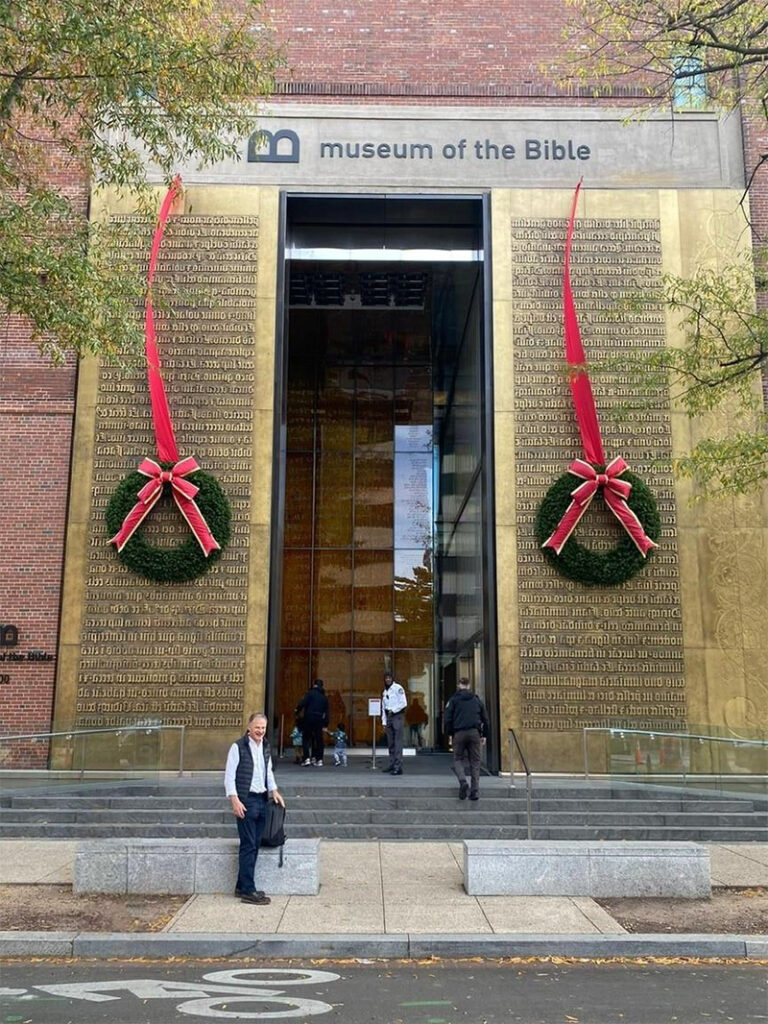
After the usual security check you enter the Entrance Foyer which is spacious and cathedral-like. The room could read as a modern interpretation of a traditional European church: with a visually interesting ‘Nave’ ceiling using a flat moving electronic display to draw eyes upward – referencing for me the spectacular gothic ceilings one sees in St George’s chapel Windsor – then arcades down each side giving onto aisles, a translucent glazed screen at upper level reminiscent of a clerestory and a patterned tiled floor reminiscent of traditional paving. I have no idea if this reference was intentional.
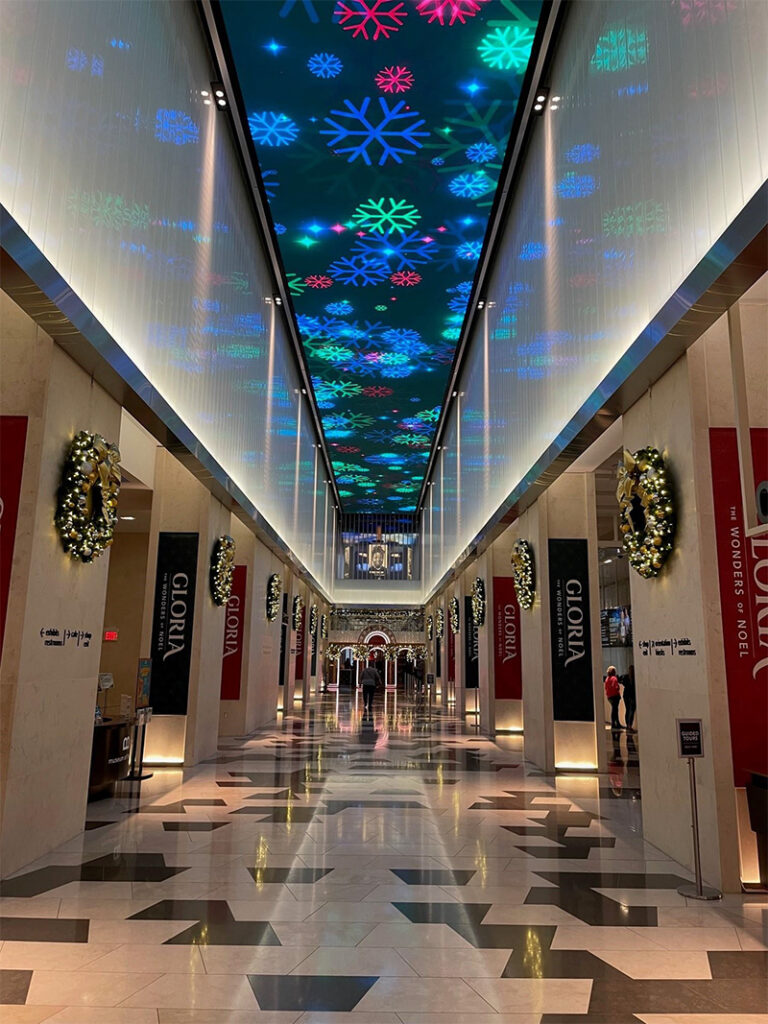
A new iconic contrasting curved glazed elliptical structure has been placed on its roof. You go from a darker world in the bottom 4 floors up to a lighter world on the 2 top floors – perhaps by intention or as aspiration.
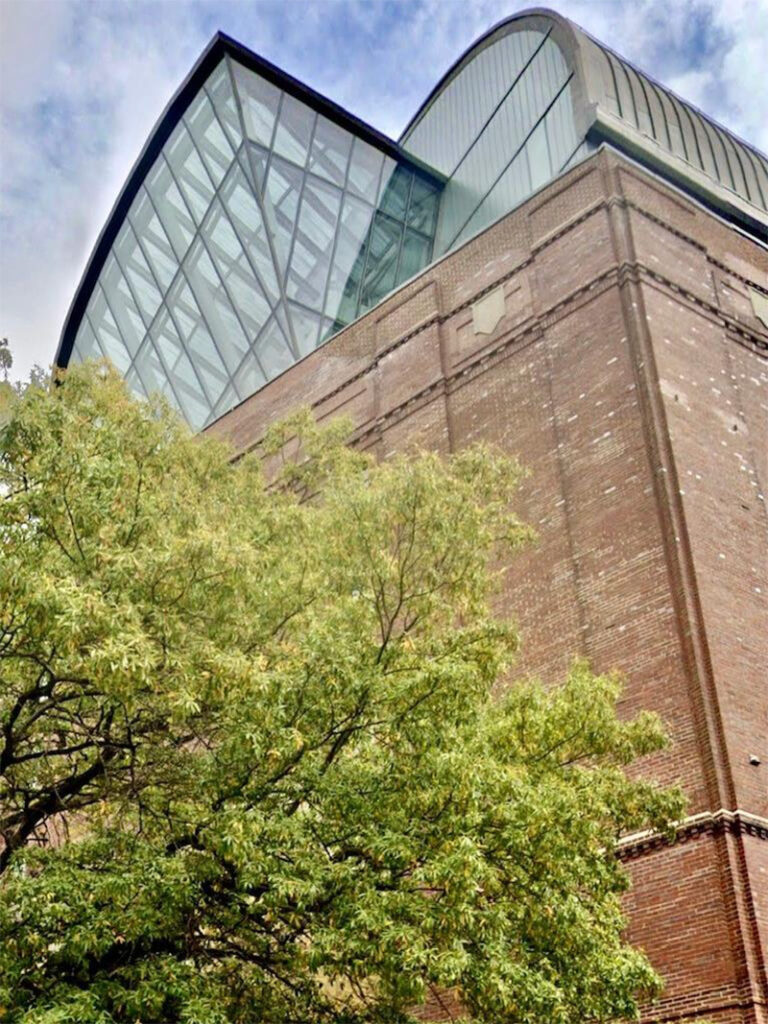
The solid unlit base gives way to something completely different. It is not clear what the shape and transition mean exactly; or is meant to mean. You have to make it up. But the contrast is visually very successful and the views from the addition are spectacular.
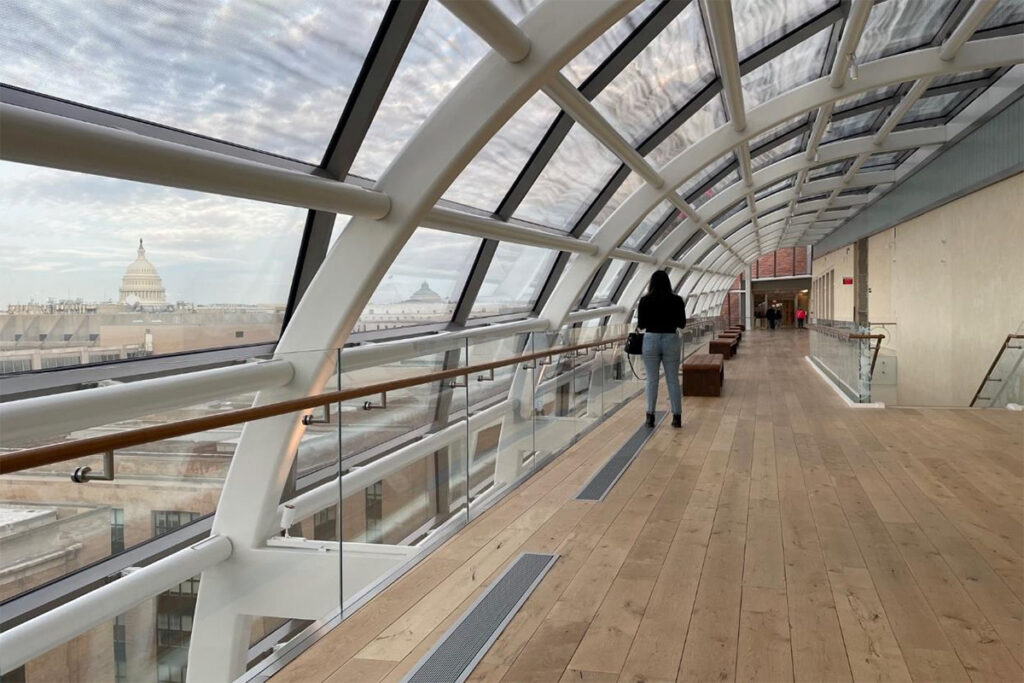
The entrance lobby leads on to a full height, 6 floored (7 if you include the Basement) atrium carved out of the structural floors with a central staircase and facilities to one side. This atrium connects all floors of the building and entrances to all the exhibits; and makes the museum very easy to navigate. Windows have been inserted down one side to provide relieving views over Washington at lower levels. These views appear intentional.
The planning of the museum is logical and easy to negotiate – each main floor given to different aspects of the Bible: its history, its story, and its impact. Then there is a floor for temporary exhibits, a performance space, and the inevitable restaurant and garden (on the top floor), and gift shop on the way out. The exhibits and their commentaries are beautifully laid out with plenty of space around for perusal and reflection. Every detail for the visitor seems to have been considered and the fabric makes you feel looked after and appreciated for coming. The atmosphere is good too. Friendly and helpful. The place has a nice spirit.
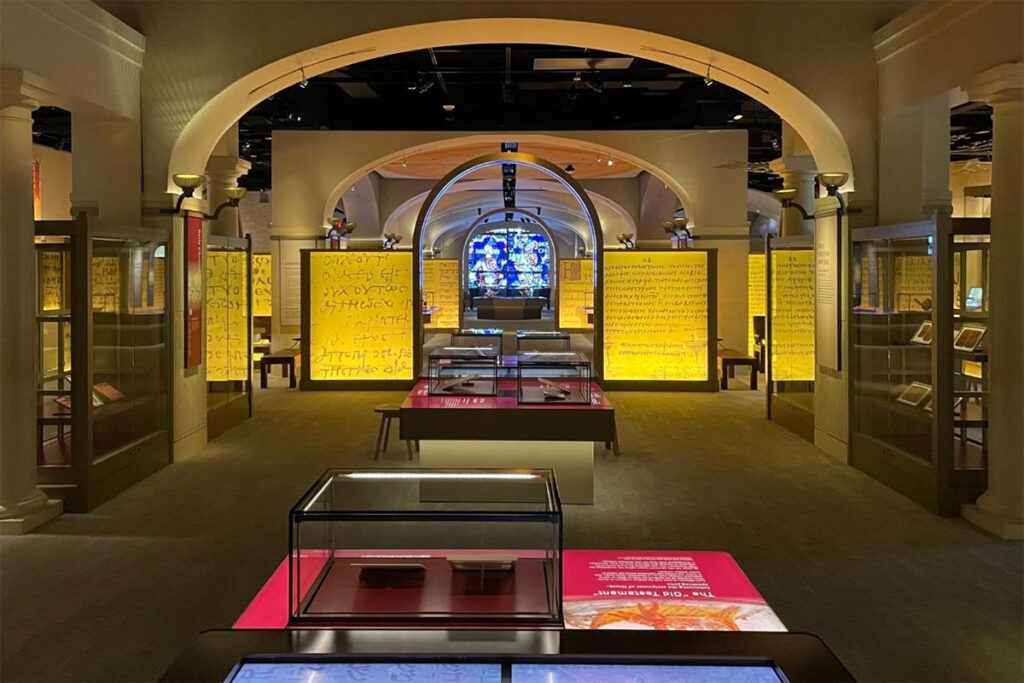
The finishes are quality. In common spaces: stone clad piers all the way through, and solid paved or wooden floors etc. When it is so costly nowadays to express appreciation of something valuable in a material way, this building pulls all the punches. Just as the medieval world spared no expense or effort to give physical manifestation and honour to what they saw as valuable in their cathedrals and palaces, so this building reflects the high value the owners have given to their Book of Books. The expense feels entirely justified.
There is some intended ‘disneyesque’ content. A virtual helicopter ride takes you at dizzying speeds around Washington, looking at biblical texts carved into the masonry of, or represented pictorially in, government buildings and monuments. There is more virtual reality, and plenty of opportunity to interact with colourful content; and experience is woven around information and often cleverly intertwined with facts. The way the story of the Bible is told is immersive, and gripping. You realise what an extraordinary tale the Bible has to tell.
We were allowed into the basement and this is where you realise just what goes into a museum like this. Cataloguing, inventories, restoration, conservation, cleaning, digital recording, and a necessary time of ‘rest’ for delicate items: 3 months on display then 3 months recuperating in darkness. We are shown an original letter written we are told in the early 16c by Martin Luther just before his hearing with the Holy Roman Emperor on his controversial 95 theses at the Diet of Wurms, which turned up in Boston of all places and has been given to the museum. You sense the emotion of the man at this very uncertain moment in his life. Precious stuff. And then it dawns on you what protection measures are needed from flooding and fire, and how highly controlled are the environments required by many of the exhibits. What mind boggling lengths of cabling were required in this building? And how big is the plant room? How do you insure all this stuff? And what if there really was a flood?
It is impressive to see how quickly the museum has learned to handle all this. Within 10 years it seems. There were earlier documented problems with the provenance of some items, but this appears to be resolved; and what museum has not had its problems (the British Museum with its governance issues and the Metropolitan Museum of New York’s stolen gilded coffin of Nedjemanck). The biggest threat here we are told is similar to the British Museum – insider theft.
It takes more than a day to see everything.
